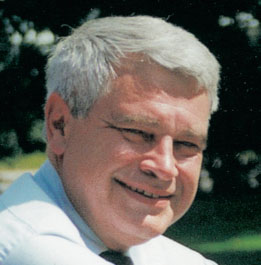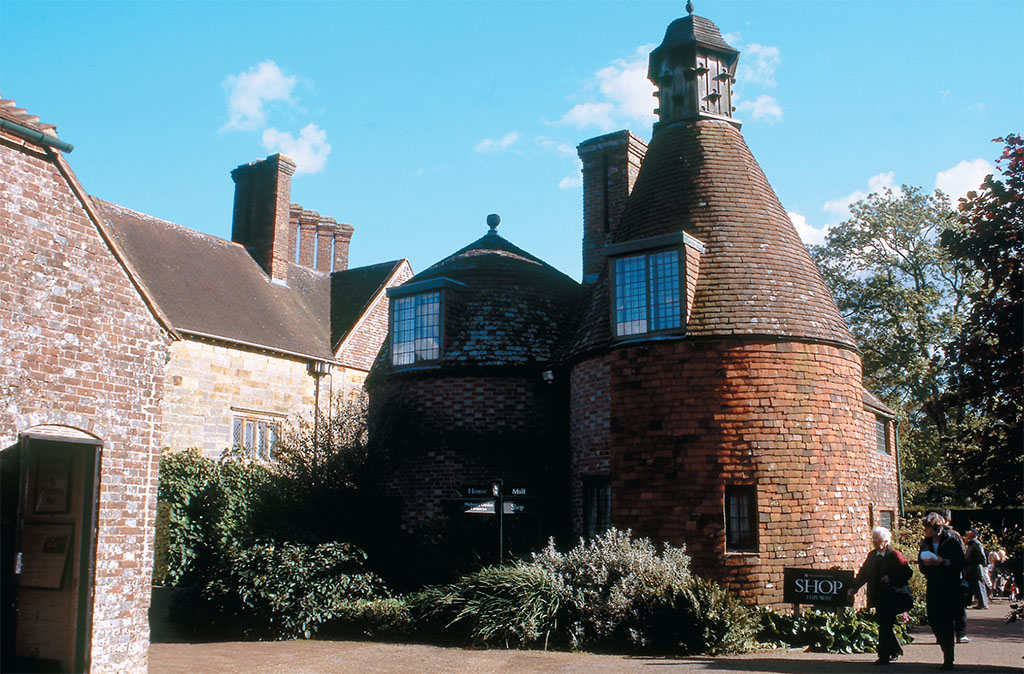
[caption id="TheWindingRoadFromBathtoYork_img1" align="aligncenter" width="261"]

FROM A DISTANCE it looks like the giant Quonset hut to end all Quonset huts. Up close it looks rather that way, too. Heathrow Terminal 5 is the largest structure under one roof in Britain. All new and shiny, the terminal is finally up to speed and whisked me through its halls into a cool London autumn morning.
Come along again on one of my periodic story-telling, picture-taking, people-meeting adventures in Britain. Yes, it’s a tough job, but, as they say, someone has to keep our great British Heritage readers current on what’s happening on our sceptered isle.
Heading west from London, my usual route is to stick to the cumbersome M4 until I get west of Reading. The byroads to that point amount to little more than crowded urban streets. Once beyond the conglomeration of Reading, though, I dropped down onto the A4 in Hungerford and headed west on a lovely and familiar route. With its broad High Street and famous college, Marlborough was an accustomed stop. I sat outside at a café and nursed a cappuccino, shaking the cobwebs of the flight from Washington.
As predicted, Tuesday brought rain. What more English thing to do in gray, wet, windy weather than to go to the seaside?
Cars overtook me several times on the road west, as I was in no hurry. I drifted past the White Horse, West Kennett Long Barrow and Silbury Hill and detoured into Avebury for a brief stretch in the circles of the ancient henge. The A4 is the old road from London to Bath. Though I’d been in Bath last spring, I was headed there this time for the Jane Austen Festival and the Grand Regency Ball at the Assembly Rooms on Saturday night. No, I wasn’t going dancing, but our own Sandra Lawrence was.
With the city crowded for the festival, I booked in just down the river in Bradford-on-Avon at the Leigh Park Hotel. Though I have stayed in Bath a score of times at least, this country house hotel made a lovely alternative. Its serenity proved a refreshing counterpoint to the omnibustle of Bath just half a dozen miles up the valley. I rendezvoused with Sandra Lawrence and her mate Tony for a minor pub hop and dinner that evening. But you can read Sandra’s account of the weekend for yourself.
I’d intended to head south on Sunday to the Jurassic Coast of Dorset and Lyme Regis. Weather was predicted fine through Monday, though, and then gray skies, wind and intermittent rain were to hold sway across the South by midweek. Since I was planning to shoot lots of pictures elsewhere on Tuesday and Wednesday, however, I reluctantly passed on Dorset and headed straight across Wiltshire to King Alfred’s Winchester. On no notice and a Sunday, I ended up staying at a pub with rooms, the Westgate Hotel. My room overlooked the Westgate—the ancient gateway at the top of the High Street. The location couldn’t have been better. The room was clean, large and well-equipped, though I doubt its interior decorator is still walking around unrestrained.
By Monday evening, I had explored Winchester, visited at Jane Austen’s nearby homes and driven down to Butser Ancient Farm—one of my favorite hidden treasures. As predicted, Tuesday brought rain. What more English thing to do in gray, wet, windy weather than to go to the seaside?
The principal driving route across the South Coast from Dorset to Kent is the A27. Running often just a couple of miles inland, the A27 bypasses the local traffic of the cities and seaside resorts that line the South Coast from Bournemouth to Folkstone. But I had never driven the actual coast road, the A259 that leads right along the shore and the waterfront of such places as Bognor Regis, Brighton and Bexhill-on-the-Sea. In the summer school holidays, it would be an impossible traffic nightmare. Midday in cold, wet October, the drive was just expectedly slow.
Picking up the A259 at Chichester, I drove past the famous Butlins resort at Bognor, past flocks of retirement homes and along the industrial waterfronts of Worthing and Hove. Brighton, of course, remains a vital city and London’s favorite seaside day-trip destination. Even in the gray, the mammoth seafront hotels that line the central shorefront and the teasing Brighton Pier are optimistically impressive.
The shore road is just a long city street all the way. East of Brighton, however, the countryside opens up a bit. Lonely and high on a windswept hill over the sea sits Roedean, one of England’s most exclusive girls’ schools. At Bexhill, the De La Warr Pavilion is the highly touted attraction—a “Modernist icon” of the ’30s, with theaters, exhibition halls, restaurants and views over the Channel.
Then, the A259 dips down into the estuary of the Cuckmere Valley before climbing onto the white chalk cliffs known as the Seven Sisters and along Beachy Head, the highest chalk cliff on the Channel coast. I detoured off onto a narrow track out toward the headland. In the parking area at the Beachy Head Nature Reserve Centre, there they were: cars of elderly English couples drinking tea out of a thermos and reading the newspaper, parked in the rain, looking over the sea.
East of Beachy Head lies Eastbourne. Largely built by the Duke of Devonshire and a few of his closest friends as a tonier, more genteel alternative to Brighton, Eastbourne must have been magnificent in its heyday. It still looks pretty good, with its grassy promenade, immaculate bedding flowers and bandstand. Today, Eastbourne is widely known as a quiet seaside holiday spot for older folks. Nearly a mile of Edwardian seafront hotels were full of a 70-something crowd who occupied their off-season rooms on inexpensive holiday packages by coach from all over the country.
After a few tries, I found a room at the Lansdown Hotel, a breezy, damp stroll of several blocks east from Eastbourne Pier. It had been 25 years since I stayed in Eastbourne, so I set out to explore the town in the windy drizzle. I froze.
At the Winter Garden, a chatty organist accompanied whirling couples on the wooden dance floor. I got a real kick watching eight or nine senior couples elegantly dancing the tango. Tuesday and Wednesday nights at the Hippodrome Theatre, old-time variety shows starring beyond-their-prime personalities play to enthusiastic crowds.
The next day, I took a road trip east along the coast on the A259, headed for a couple of places I had long intended to see. The ancient port town of Rye ceased to be a port centuries ago. At one time, though, Rye was the jewel of the Cinque Ports. It has earned its reputation as a quaint medieval village. With steep, cobbled streets, a long association with Henry James and other writers, ghosts, smugglers and a painfully picturesque High Street, Rye clearly plays to its visitors—and receives many of them.
[caption id="TheWindingRoadFromBathtoYork_img2" align="aligncenter" width="1024"]

DANA HUNTLEY
Turning inland, I drove a zigzag route of 20 miles or so into the lush East Sussex countryside of ripe apple orchards and oast houses to the village of Burwash, to Bateman’s, home of Rudyard Kipling for more than 30 years. Kipling purchased the Jacobean manor house in 1902 after discovering it on one of his motoring tours. Today, the home, gardens and outbuildings are largely as he left them. At the back of the garden, a team was stone-grinding flour at the water-shot gristmill. Kipling had put in a turbine at the old wheel to generate electricity. Bateman’s was a wonderful introduction into the world of Rudyard Kipling—still the youngest-ever winner of the Nobel prize for literature.
I did enjoy those English breakfasts in the Edwardian dining room of the Lansdown, the thick white linen service and heavy silver utensils as well as the old bacon and scrambled. On Thursday morning, though, I had an early start, up the A23 to Gatwick and the M23 to the orbital M25. I dropped off the rental car in Staines—just east along the Thames from Windsor—and caught the first train to Waterloo Station. In an hour I was across town to London Kings Cross and aboard an express north to York.
[caption id="TheWindingRoadFromBathtoYork_img3" align="aligncenter" width="1024"]

DANA HUNTLEY
I took students to York for many years back in the ’80s; I’ve happily returned often since. It had been five years since I was last in the historic capital of the North Country, though, and I wanted to see how the city was faring. York remains one of the most fun visits in England, and perhaps my No. 1 must-see destination outside London.
Once again it was cold and intermittently soggy. No matter. York itself more than deserves its own feature, and I will tell its story in the May issue. Within its 14th-century walls, York’s city center is largely pedestrianized and the medieval heart of the city is a delight to discover.
When it was time to nourish the soul with a pint and my pipe, I headed for Ye Olde Starre Inn, the oldest licensed pub in York. Down a snickleway off Stonegate, the Starre pulls a worthy pint, and has an enclosed smoking garden, snug against the wind, canopied and heated—a sure refuge against drizzle and a cold wind off the Penniness. Like most of York’s old city-center pubs, the Starre would be recognizable to its patrons of 100 years ago.
I took dinner at Russell’s of Coppergate one evening—classic English cuisine in its best dress. At the carvery, joints of lamb, beef, pork and gammon are sliced to order, accompanied by all the traditional garnishes and veg. I passed on a Yorkshire pudding the size of a rugby ball or I would never have finished my Brussels sprouts. It was lovely fare.
After two days of exploring and photographing York, I ended up early Saturday evening back at Ye Olde Starre. I got into conversation and pints at a table in the covered garden with a quartet of young professionals—mid-20s university grads beginning to make their way in the world. Conversation was animated across education, religion, comparative politics and more. Dinner was donar kebab from a street vendor picked up on my way back to the hotel about midnight. The next day I trained to London for a couple of nights before heading home. I did get east to West India Quay and the Museum of the Docklands.
Every travel experience in Britain, as many British Heritage readers know, leaves you with its own impressions.
Our election is over; the Brits still have Gordon Brown. The moment seems passed when he was most vulnerable to a Labour leadership challenge. Though his unpopularity has made governing difficult, he can likely muddle on until 2010. British and American perceptions of each other’s politics are colored hugely by an inadequate understanding of the very real differences between their parliamentary and our republican forms of government.
The Ugandan-born Archbishop of York Dr. John Sentamu gets high marks from virtually everyone I heard speak of him—from the devout lady handing out greetings at St. Michel-le-Belfry to my largely irreligious new friends at Ye Old Starre. Sentamu is straight-talking, courageous, colorful and charismatic. Consensus is that he is an important voice in the country.
And those senior-somethings down in Eastbourne haunt me. Sipping tea on the glass-enclosed sun verandas while the rain dribbles down the panes or playing bridge in one of the vast over-stuffed lounges, they were perfectly content. “Typical.” I love it.





Comments